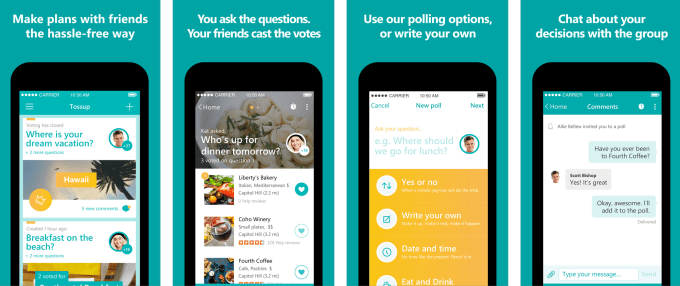Microsoft surprised everyone in 2012 by announcing a tablet designed in house to run the company’s brand new Windows RT operating system. It was the first time we had seen Microsoft, a company mostly focused on software products, come out with a fully-fledged tablet of their own, and it wasn’t just a rehash of a competitors’ design: the Surface RT’s magnesium-alloy body combined with the innovative Touch and Type Covers made it stand out from the crowd.
Unfortunately by the time the Surface RT launched in late 2012, it wasn’t as stellar as everyone was expecting. The ARM-based Tegra 3 SoC made the tablet feel slow and clunky to use. On top of that, Windows RT itself was void of many features found on tablets that used fully-fledged Windows 8, most notably the ability to run desktop applications.
Along with the Surface RT, Microsoft also announced the Surface Pro which did run Windows 8 Pro 64-bit and came with ultrabook-class internals and a high-resolution display. However it also came at twice the price so it wasn't a product that could compete with hot-selling iPads of the time.
The Surface RT and the Surface 2 were not commercial successes in spite of the excellent hardware. In early 2015, both devices, along with Windows RT in its entirety were discontinued.
With Microsoft conceding that Windows RT had failed, the company updated the Surface line with a new product that consumers would find considerably more attractive.
Rather than continue down the path of ARM-based tablets, Microsoft switched to low-power x86 SoCs, while also taking inspiration from their performance Surface Pro line. The end result is the Surface 3, and it’s mighty attractive.
The Surface 3 packs a similar design to last year’s Surface Pro 3, albeit in a slightly smaller, fanless body. The outer shell is made from a magnesium alloy that gives the tablet a pleasing matte grey finish, while the 10.8-inch display features the same 3:2 aspect ratio as its larger brother. Internally we’re getting a new quad-core Intel Atom ‘Cherry Trail’ SoC and up to 4 GB of RAM, while keeping features like the full-sized USB port that makes the Surface line so versatile.
The metal body of the Surface 3 is one of my favorite aspects of the tablet. It not only makes the device feel sturdy, but it also gives it that premium edge over tablets that stick with plastic or other inferior materials. The use of a matte finish, rather than a polished or brushed finish makes the Surface 3 less of a fingerprint magnet and I quite like the dulled look this finish provides.
Another aspect of the Surface 3’s design that I appreciate is the clean, hard lines that give the tablet a slight isosceles trapezoidal shape, rather than the boring round rectangle we see on so many other devices. The use of grey metal along the edges also contributes to a clean, minimalist and consistent design.
There are a couple of areas on the Surface 3 that aren’t made of metal. The first is a strip of grey plastic along the top edge, which is necessary to ensure the wireless radios are able to function. This strip contains the slightly off-center rear camera and its accompanying status LED, while the top edge features both the power button and volume rocker. The power button isn’t exactly in a perfect spot for portrait or landscape operation, but I’ve yet to see a tablet that really nails this.
The front of the Surface 3 is protected with Gorilla Glass and has a very swooshable feel to it. The screen bezel is appropriately sized for holding the tablet without covering up much of the display, and the location of the Windows button on the right edge (in landscape orientation) makes sense. Above the display is the almost hidden front facing camera, while on either side you’ll find the adequate front-facing speakers.
The right-hand edge of the tablet is also where you’ll find all the ports. Here we have a 3.5mm audio jack, a microUSB port that’s used for charging, a full-sized USB 3.0 port that’s incredibly handy for attaching devices and peripherals, and a mini-DisplayPort that provides great versatility for connecting displays. I expect the three latter ports will be combined into USB Type-C in future Surfaces, and this would allow the tablet to shed some thickness, but for now having all three is great for device compatibility.
Speaking of thickness, the Surface 3 clocks in at 8.6mm thick and 620 grams heavy, which is average for a tablet of this size. The design of the device doesn’t pretend to make the device look slimmer than it really is, so compared to more curved rivals it looks a bit chunkier. And in many cases, it is technically chunkier as well: the Apple iPad Air 2 and the Sony Xperia Z4 Tablet (both ARM-based) are just 6.1mm thick.
Along the bottom edge of the Surface 3 is the powerful magnetic connector that allows to connect to the Type Cover. Above this is the hinge, which acts as a stand for the tablet and has three positions it can lock in to. I prefer the infinite-position hinge of the Surface Pro 3 to the limited design Microsoft used for the Surface 3, but nevertheless the hinge comes in handy often for positioning the tablet on desks and on your lap. The hinge is made of metal and is very strong. Hidden behind it is a microSD card slot.


The display included with the Surface 3 is a 10.8-inch “ClearType Full HD Plus” IPS LCD panel with a resolution of 1920 x 1280. As I mentioned earlier, this a 3:2 aspect ratio display, which personally I think is a much better resolution than 16:9 for a tablet as it provides great usability in both landscape and portrait orientations. 16:9 has always felt a bit wide for tablet use and, with a 10-inch plus display, can make the device hard to hold and operate. With a 3:2 aspect ratio, these issues aren’t nearly as prevalent.
This panel packs a pixel density of 214 PPI, which essentially matches the density of the Surface Pro 3’s larger 12-inch, 2160 x 1440 display. It’s not quite in the same class as some tablets we’ve seen, particularly on the Android side, that use 1440p or 1600p resolutions – the Xperia Z4 Tablet’s 10-inch 1600p display is 300 PPI, for example, while the latest 9.7-inch iPads are 264 PPI – but the Surface 3 still looks sharp and crisp while viewing text, images and videos.
I was generally pretty impressed with the color reproduction and accuracy of this display, while still showing off a great level of vibrance and saturation. The color tone of the display leans towards the warm end of the spectrum, which is more noticeable when viewing white or grey web pages. Contrast is great, and black levels are acceptable, although gamma is well below what it should be for an sRGB-calibrated panel.
Viewing angles are also excellent and the high levels of brightness allow the screen to be viewed in nearly all conditions. I also found the 10-point multi-touch display to be very responsive.


